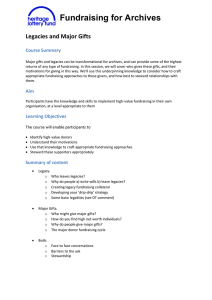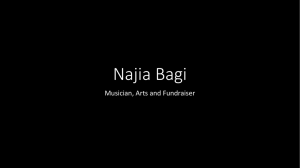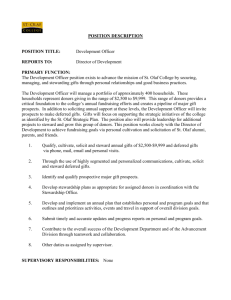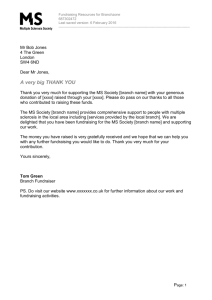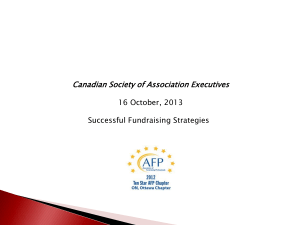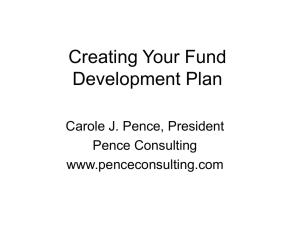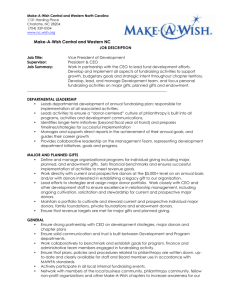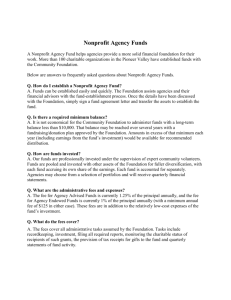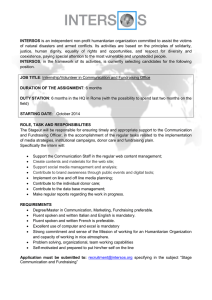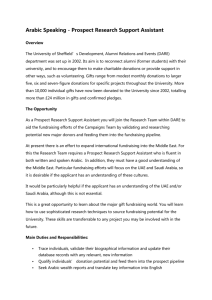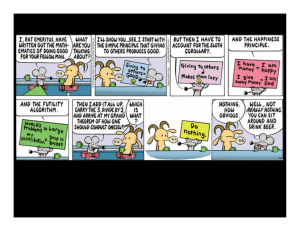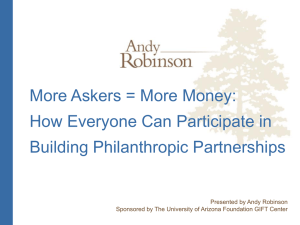Fundraising Best Practices and Principles Or The
advertisement
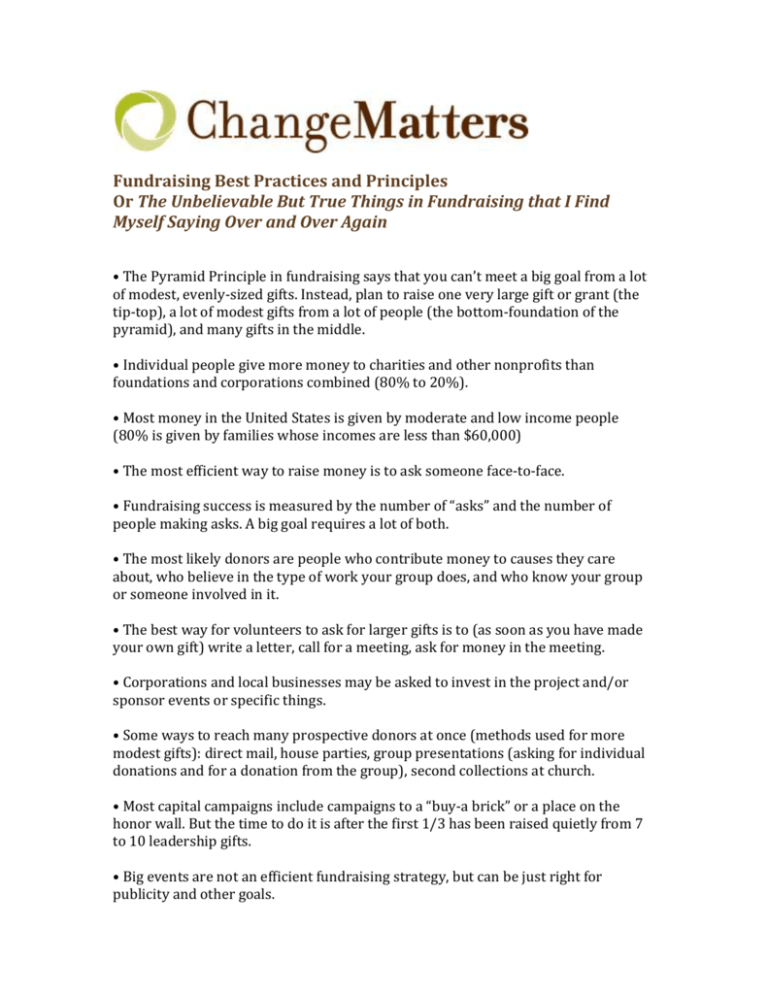
Fundraising Best Practices and Principles Or The Unbelievable But True Things in Fundraising that I Find Myself Saying Over and Over Again • The Pyramid Principle in fundraising says that you can’t meet a big goal from a lot of modest, evenly-sized gifts. Instead, plan to raise one very large gift or grant (the tip-top), a lot of modest gifts from a lot of people (the bottom-foundation of the pyramid), and many gifts in the middle. • Individual people give more money to charities and other nonprofits than foundations and corporations combined (80% to 20%). • Most money in the United States is given by moderate and low income people (80% is given by families whose incomes are less than $60,000) • The most efficient way to raise money is to ask someone face-to-face. • Fundraising success is measured by the number of “asks” and the number of people making asks. A big goal requires a lot of both. • The most likely donors are people who contribute money to causes they care about, who believe in the type of work your group does, and who know your group or someone involved in it. • The best way for volunteers to ask for larger gifts is to (as soon as you have made your own gift) write a letter, call for a meeting, ask for money in the meeting. • Corporations and local businesses may be asked to invest in the project and/or sponsor events or specific things. • Some ways to reach many prospective donors at once (methods used for more modest gifts): direct mail, house parties, group presentations (asking for individual donations and for a donation from the group), second collections at church. • Most capital campaigns include campaigns to a “buy-a brick” or a place on the honor wall. But the time to do it is after the first 1/3 has been raised quietly from 7 to 10 leadership gifts. • Big events are not an efficient fundraising strategy, but can be just right for publicity and other goals. • “Fundraisers” like those at restaurants, bake sales, candy and wrapping paper sales, e-script with Safeway, etc. can raise small amounts of cash ($500 to a few thousand dollars). However, they can burn volunteers out and typically raise very little compared to the effort. Also, these strategies are best for annual fundraising for operating expenses. About ChangeMatters ChangeMatters, Benefit LLC is a social enterprise consultancy working with entrepreneurs and executives in the overlap of business and social change that specializes in strategic and business planning, funding, and training. The first recognized Benefit LLC (a new designation for closely-held companies that balance financial, environmental, and social change objectives), ChangeMattters helps nonprofits expand programs and build earned revenue and helps small businesses do more good. Providing capacity-building services since 1999, we help social purpose organizations design and advance creative strategies for achieving their goals. ChangeMatters works with arts, entrepreneurial, international, and social change organizations to make breakthroughs in funding, capacity, and growth at critical points of change. The firm’s name refers to the elements and activities necessary to create meaningful social change, the significance of donated money and earned revenue to this work, the challenge of internal organizational change, and the core belief that this work is important to do. ChangeMatters collaborating partners and associates based in Baltimore, Kansas City, Tuscon, and the Washington, DC area include specialists in prospect research, grantwriting and program design, facilitation and training, board development, leadership and coaching, strategic communications, philanthropy, and evaluation and compliance. Contact Us: Amy Kincaid, Principal and Owner ChangeMatters, Benefit LLC 301-588-9108 (mobile) info@changematters.com Copyright Amy Kincaid, 2007
